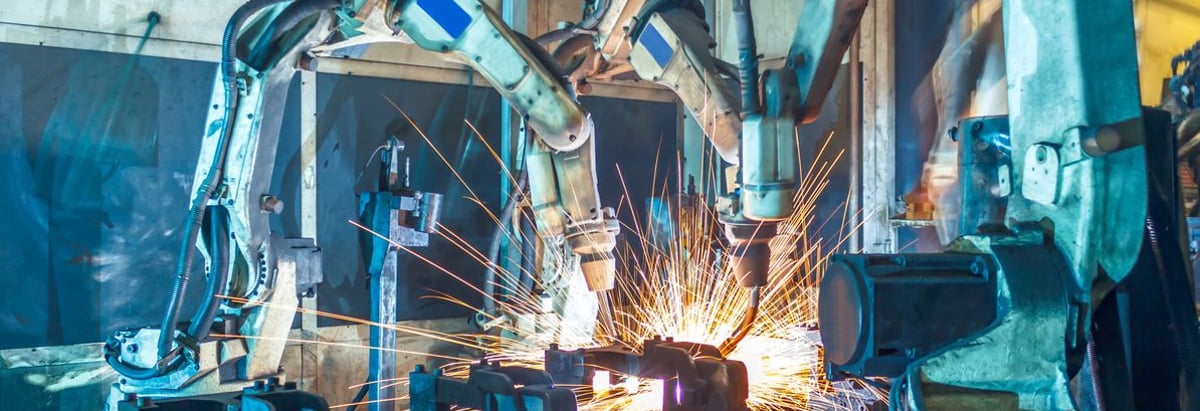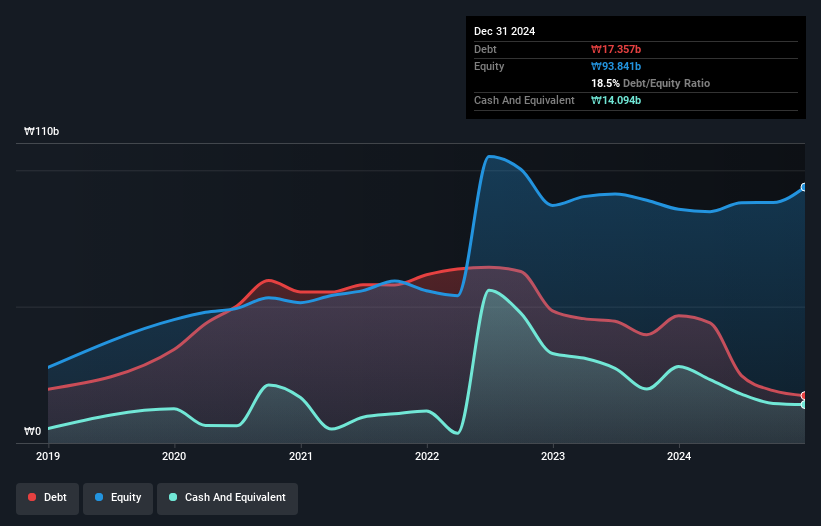
Howard Marks put it nicely when he said that, rather than worrying about share price volatility, 'The possibility of permanent loss is the risk I worry about... and every practical investor I know worries about.' It's only natural to consider a company's balance sheet when you examine how risky it is, since debt is often involved when a business collapses. As with many other companies CS BEARING Co., Ltd. (KOSDAQ:297090) makes use of debt. But is this debt a concern to shareholders?
Why Does Debt Bring Risk?
Debt assists a business until the business has trouble paying it off, either with new capital or with free cash flow. If things get really bad, the lenders can take control of the business. However, a more frequent (but still costly) occurrence is where a company must issue shares at bargain-basement prices, permanently diluting shareholders, just to shore up its balance sheet. By replacing dilution, though, debt can be an extremely good tool for businesses that need capital to invest in growth at high rates of return. When we examine debt levels, we first consider both cash and debt levels, together.
How Much Debt Does CS BEARING Carry?
The image below, which you can click on for greater detail, shows that CS BEARING had debt of ₩17.4b at the end of December 2024, a reduction from ₩46.6b over a year. However, it does have ₩14.1b in cash offsetting this, leading to net debt of about ₩3.26b.

A Look At CS BEARING's Liabilities
The latest balance sheet data shows that CS BEARING had liabilities of ₩53.2b due within a year, and liabilities of ₩1.00b falling due after that. Offsetting these obligations, it had cash of ₩14.1b as well as receivables valued at ₩35.4b due within 12 months. So its liabilities outweigh the sum of its cash and (near-term) receivables by ₩4.65b.
Since publicly traded CS BEARING shares are worth a total of ₩184.1b, it seems unlikely that this level of liabilities would be a major threat. But there are sufficient liabilities that we would certainly recommend shareholders continue to monitor the balance sheet, going forward.
Check out our latest analysis for CS BEARING
We use two main ratios to inform us about debt levels relative to earnings. The first is net debt divided by earnings before interest, tax, depreciation, and amortization (EBITDA), while the second is how many times its earnings before interest and tax (EBIT) covers its interest expense (or its interest cover, for short). This way, we consider both the absolute quantum of the debt, as well as the interest rates paid on it.
Given net debt is only 0.59 times EBITDA, it is initially surprising to see that CS BEARING's EBIT has low interest coverage of 1.6 times. So one way or the other, it's clear the debt levels are not trivial. Pleasingly, CS BEARING is growing its EBIT faster than former Australian PM Bob Hawke downs a yard glass, boasting a 3,568% gain in the last twelve months. The balance sheet is clearly the area to focus on when you are analysing debt. But ultimately the future profitability of the business will decide if CS BEARING can strengthen its balance sheet over time. So if you want to see what the professionals think, you might find this free report on analyst profit forecasts to be interesting.
But our final consideration is also important, because a company cannot pay debt with paper profits; it needs cold hard cash. So we clearly need to look at whether that EBIT is leading to corresponding free cash flow. During the last two years, CS BEARING burned a lot of cash. While that may be a result of expenditure for growth, it does make the debt far more risky.
Our View
We weren't impressed with CS BEARING's interest cover, and its conversion of EBIT to free cash flow made us cautious. But its EBIT growth rate was significantly redeeming. When we consider all the elements mentioned above, it seems to us that CS BEARING is managing its debt quite well. But a word of caution: we think debt levels are high enough to justify ongoing monitoring. When analysing debt levels, the balance sheet is the obvious place to start. However, not all investment risk resides within the balance sheet - far from it. Be aware that CS BEARING is showing 1 warning sign in our investment analysis , you should know about...
At the end of the day, it's often better to focus on companies that are free from net debt. You can access our special list of such companies (all with a track record of profit growth). It's free.
New: AI Stock Screener & Alerts
Our new AI Stock Screener scans the market every day to uncover opportunities.
• Dividend Powerhouses (3%+ Yield)
• Undervalued Small Caps with Insider Buying
• High growth Tech and AI Companies
Or build your own from over 50 metrics.
Have feedback on this article? Concerned about the content? Get in touch with us directly. Alternatively, email editorial-team (at) simplywallst.com.
This article by Simply Wall St is general in nature. We provide commentary based on historical data and analyst forecasts only using an unbiased methodology and our articles are not intended to be financial advice. It does not constitute a recommendation to buy or sell any stock, and does not take account of your objectives, or your financial situation. We aim to bring you long-term focused analysis driven by fundamental data. Note that our analysis may not factor in the latest price-sensitive company announcements or qualitative material. Simply Wall St has no position in any stocks mentioned.
About KOSDAQ:A297090
CS BEARING
Engages in the manufacture and sale of bearings in South Korea.
High growth potential with adequate balance sheet.
Market Insights
Community Narratives




